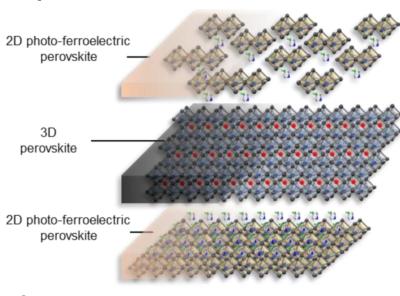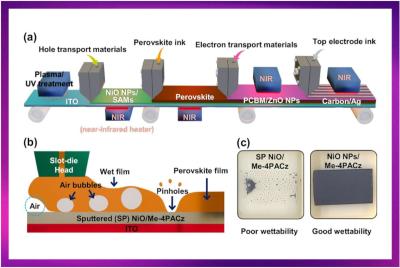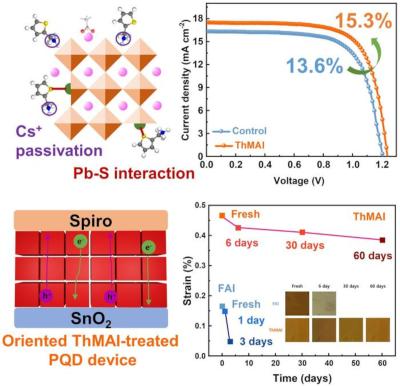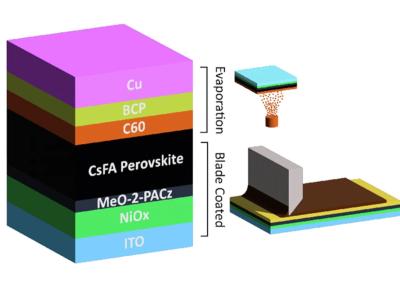Researchers develop unique HTMs to enhance device stability of PSCs
Researchers from Thailand's Mahidol University, Rajamangala University of Technology Thanyaburi and Synchrotron Light Research Institute have presented two novel air-stable hole transporting materials (HTMs) based on a spiro[fluorene-9,9′-xanthene] (SFX) core functionalized with N-methylcarbazole (XC2-M) and N-hexylcarbazole (XC2-H) rings.
These HTMs were synthesized via a straightforward, three-step process with good overall yields (∼40%) and low production costs. To further reduce device cost, carbon back electrodes were employed. The resulting PSCs, with a structure of FTO/SnO2/Cs0.05FA0.73MA0.22Pb(I0.77Br0.23)3/HTM/C, achieved power conversion efficiencies (PCEs) of 13.5% (XC2-M) and 10.2% (XC2-H), comparable to the reference spiro-OMeTAD device (12.2%).







